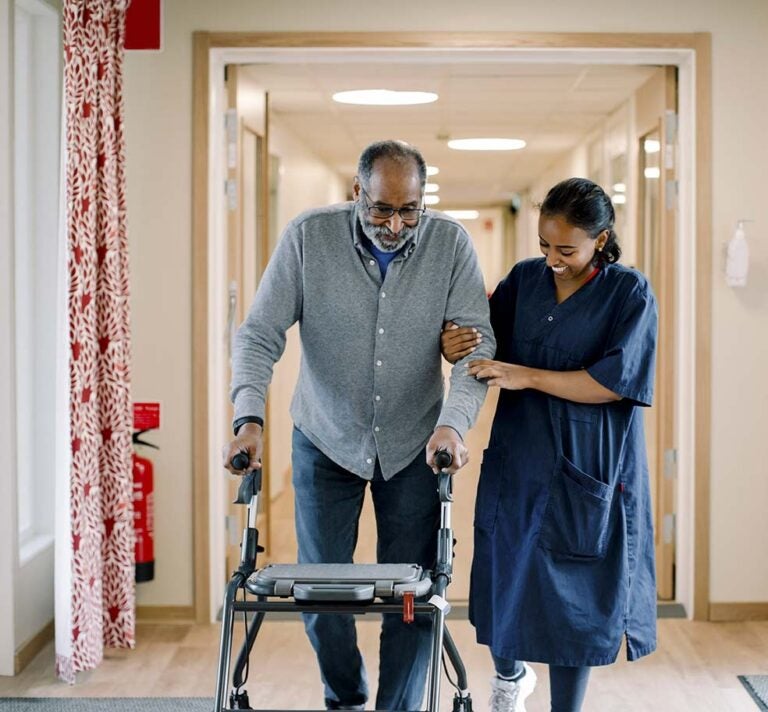When you obtain a reverse mortgage, requirement is that you use the house as your primary residence. If you have a reverse mortgage and need to move into an assisted living facility, hospital, or nursing home for more than 12 consecutive months, it can violate the reverse mortgage loan agreement terms. While moving into a facility is often due to medical necessity, it’s important to understand your options and what happens to your mortgage and your family.
Will I Lose My House When I Go to a Nursing Home?
Not necessarily. One of the requirements for a reverse mortgage is to keep your home as your primary (or principal) residence. When you move for medical reasons, such as going to a nursing home, you can keep your home as long as you’re not away for more than 12 consecutive months, according to Consumer Federal Protection Bureau (CFPB).
If you can’t return to your home within this timeline, your reverse mortgage loan will mature and be due and payable. In other words, you will need to repay it. Repayment of a reverse mortgage is most commonly made through the sale of the home.
Get your free reverse mortgage information kit
Request Info
Can My Spouse Remain in the House?
With a reverse mortgage, whether one spouse can remain in the house after the other moves to an assisted living facility depends on who is on the mortgage and their eligibility status. If both spouses are listed on the reverse mortgage, and one of them moves into assisted living, the remaining spouse can stay in the home and continue to receive the reverse mortgage proceeds.
If the remaining spouse is not on the reverse mortgage, their ability to stay in the home depends on their eligibility. To be eligible for these protections, the non-borrowing spouse would need to have been married to the borrowing spouse at the time the mortgage was taken and still married and living with the borrowing spouse until the time that spouse left the home.
An eligible non-borrowing spouse can remain in the home (but will not receive loan proceeds) if the following qualifications are met:
- The HECM isn’t in default for any reason.
- The non-borrowing spouse was married to the borrower at loan closing and remained married until the borrowing spouse’s departure from the home.
- The individual is listed as a non-borrowing spouse in loan documents.
- The non-borrowing spouse continues to live in the home as a primary residence, maintains the home, and pays property taxes, home association dues, and insurance.
When Should I Notify my Lender?
Be sure to check the terms of your loan to ensure you are meeting your obligations about notifying your lender of any changes. As a reverse mortgage borrower, you are required to certify that the home is your primary (or principal) residence each year. If your spouse remains in the house as an eligible non-borrowing spouse, you will need to certify that you are still married and that the home is your spouse’s primary residence.
Can I Use My Reverse Mortgage to Pay for Assisted Living?
In some cases, yes. The proceeds of a reverse mortgage can be used for living and healthcare expenses, including assisted living. However, the loan will mature and become due and payable unless your co-borrowing spouse stays in the house. Although an eligible non-borrowing spouse may remain in the home, they will not be able to access any further loan proceeds once the loan matures.
It’s important to understand the requirements of a reverse mortgage and how different life situations impact them. By taking the time to review your options and obligations, you can make the best decision for yourself and your family.
Seniority is published by Finance of America Reverse LLC. The views expressed in this publication are those of the author alone and do not necessarily reflect the views and opinions of Finance of America Companies. This article is intended for general informational and educational purposes only and should not be construed as financial or tax advice. For more information about whether a reverse mortgage may be right for you, you should consult an independent financial advisor. For tax advice, please consult a tax professional.



